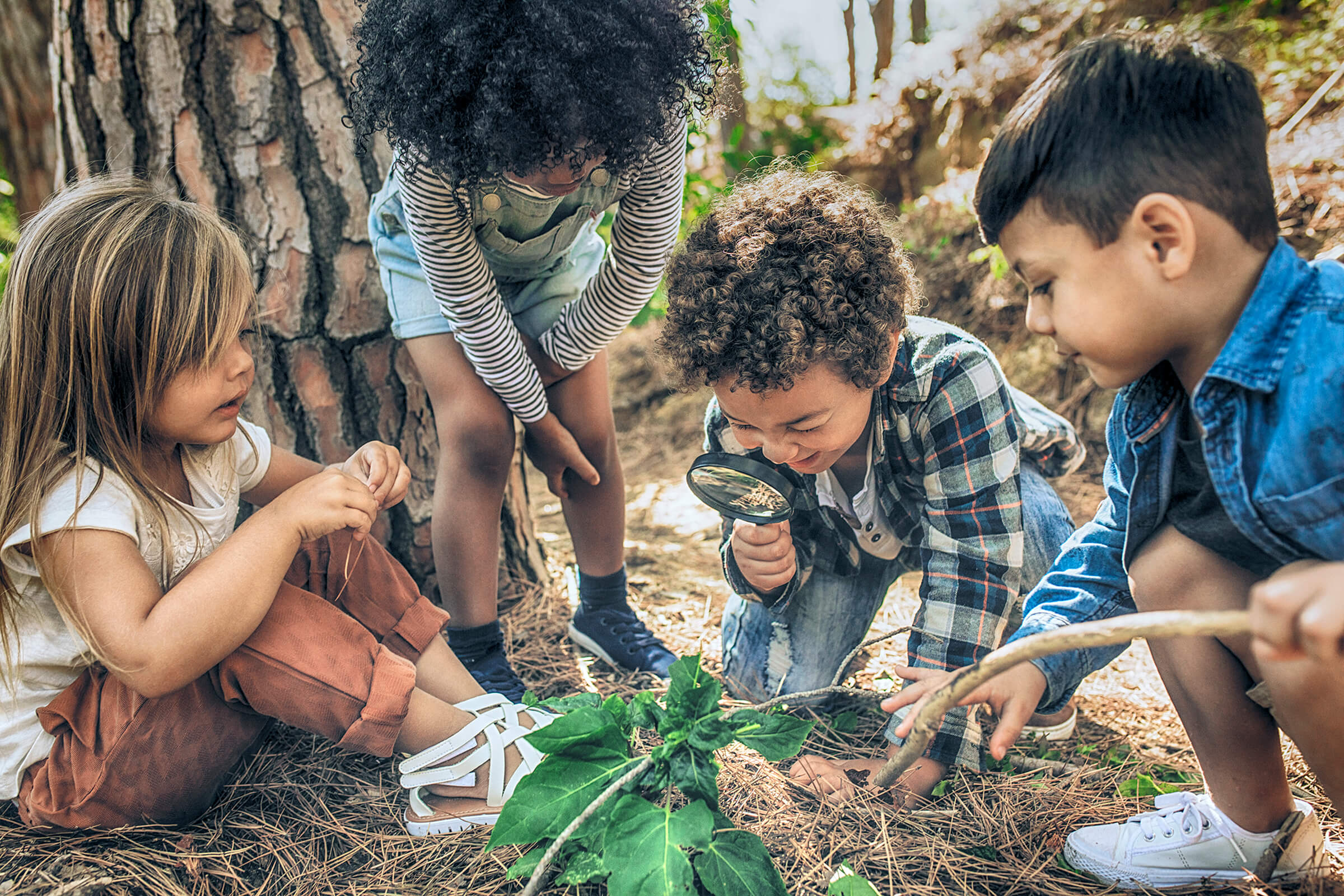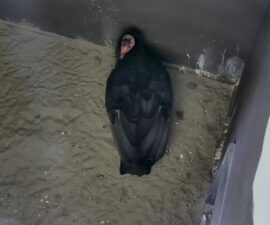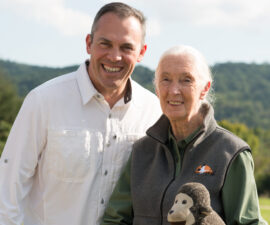BY Abigail Karkenny
When was the last time you squished mud through your fingers? Or hopped like a frog through a sprinkler, or used a stick as a magic wand?
As kids, these moments of exploratory outdoor play are what taught us resilience, creativity, and self-confidence. Research has shown that these experiences, commonly called “nature play,” are not only fun, but fundamental to children’s development—especially during the first five years of a child’s life. Perhaps even more exciting for those of us at San Diego Zoo Wildlife Alliance? Nature play can foster empathy for wildlife and wild places, paving the way for conservation-minded adults—the next generation of leaders, voters, teachers, parents, and decision-makers.
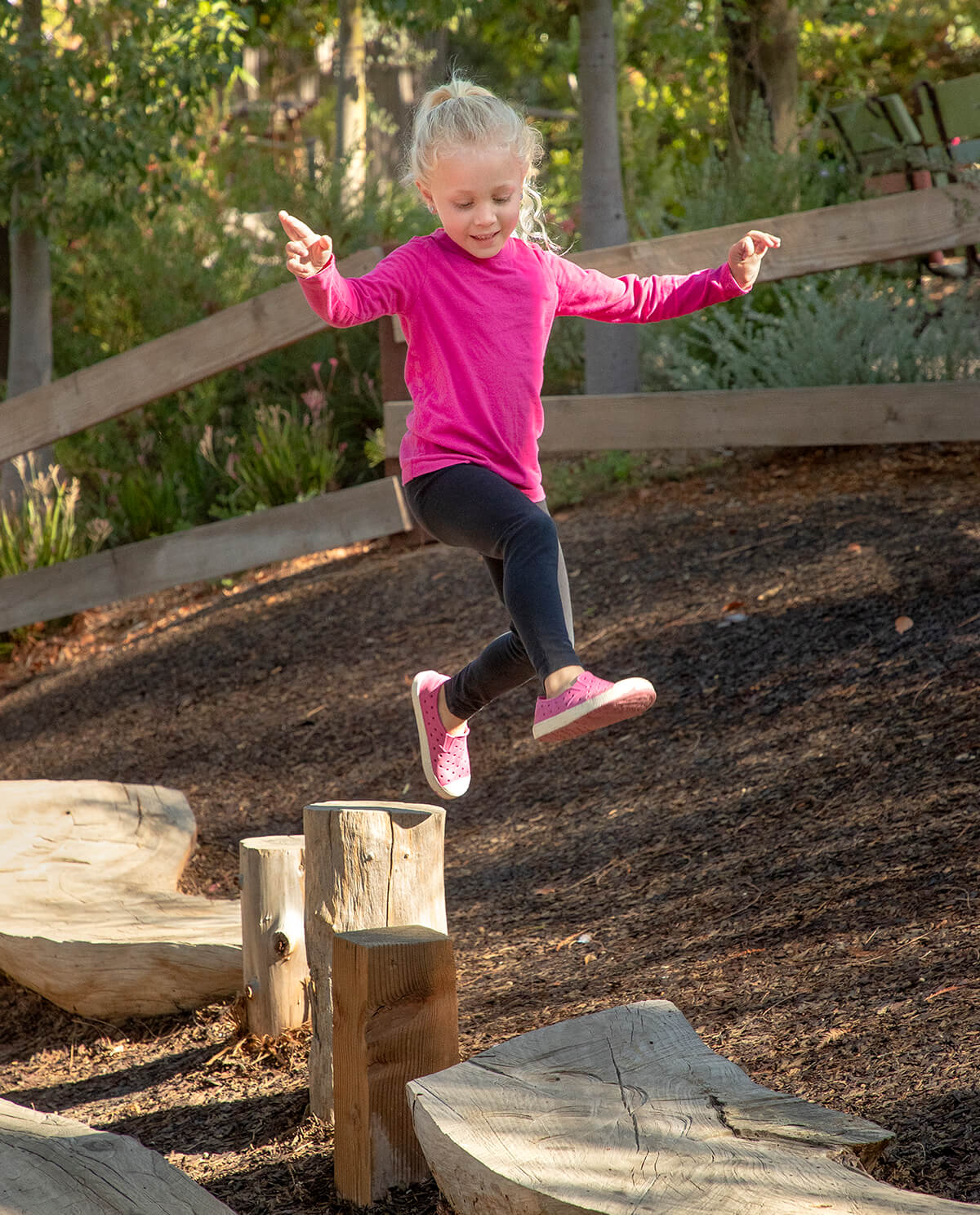
But when it comes to kids’ time spent outdoors, the statistics are worrying. A 2015 report showed that American children spend an average of five to eight hours in front of a screen each day. After more than a year stuck inside on virtual school due to a global pandemic, that number is sure to have increased, further shrinking kids’ play in the great outdoors.
Here’s the good news: nature play comes in all kinds of shapes and sizes. It can mean climbing and splashing during a trip to the San Diego Zoo’s new Denny Sanford Wildlife Explorers Basecamp (opening in February 2022), building sandcastles at the beach, or a trek to a state park. But sometimes, it’s even simpler.
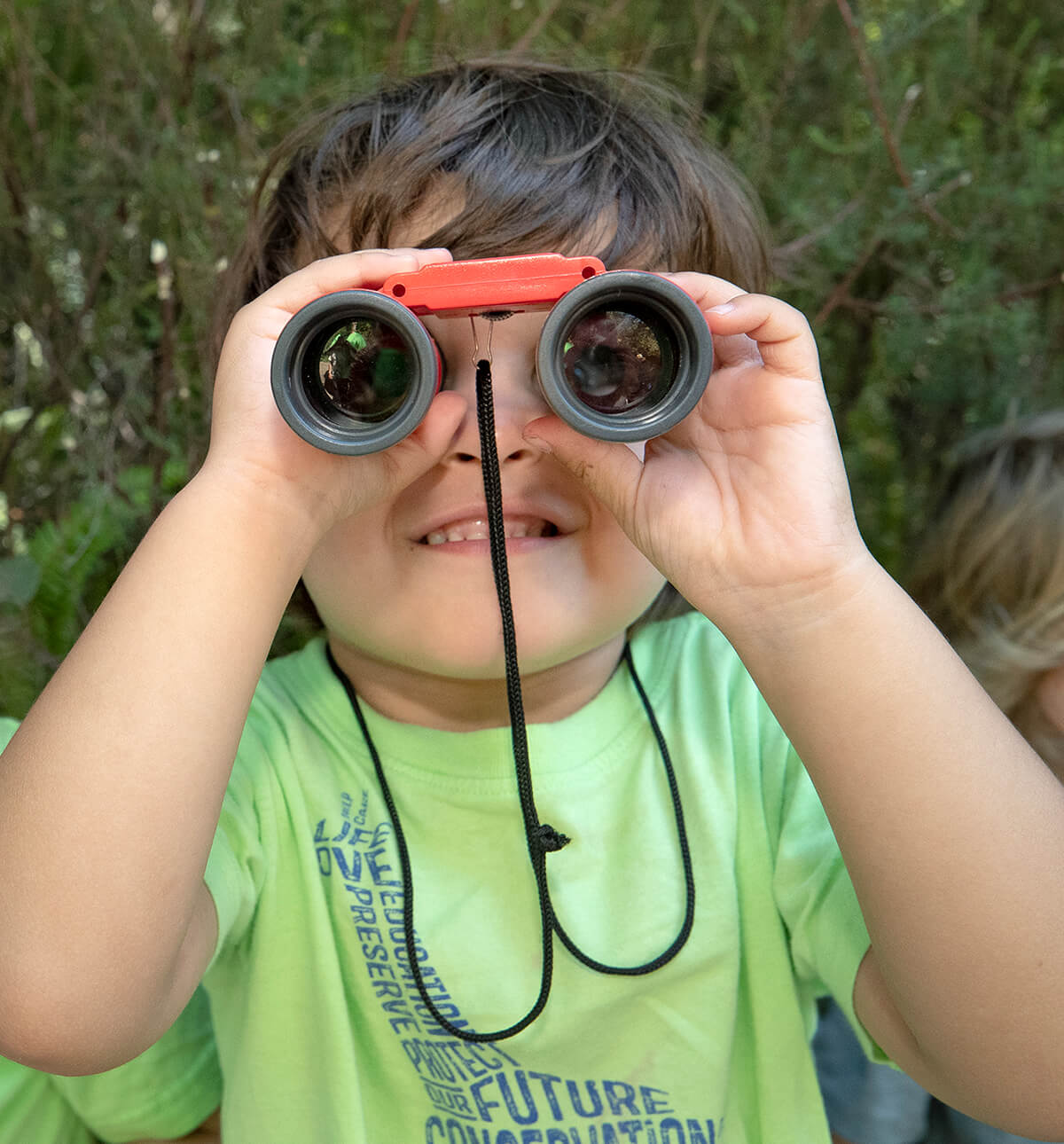
“Nature play can take place just about anywhere and anytime. There doesn’t have to be a predetermined structure, activity, or objective, aside from just finding joy in nature,” says Megan Garcia, Education Manager of School, Youth, and Family Programs at the San Diego Zoo. “It’s all about improvisation—going with what is fun, engaging, and available in the moment.”
Ideally, kids are the drivers of nature play. Grown-ups can best support by following their lead, keeping everyone safe, and creating opportunities for outdoor play to happen. If you’re not sure where to start, use some of these ideas to set kids up for nature play success, shared by the San Diego Zoo education department. These activities can easily be done at home or in a nearby park. But remember… this is just a starting point. Young imaginations will take things to the next level!
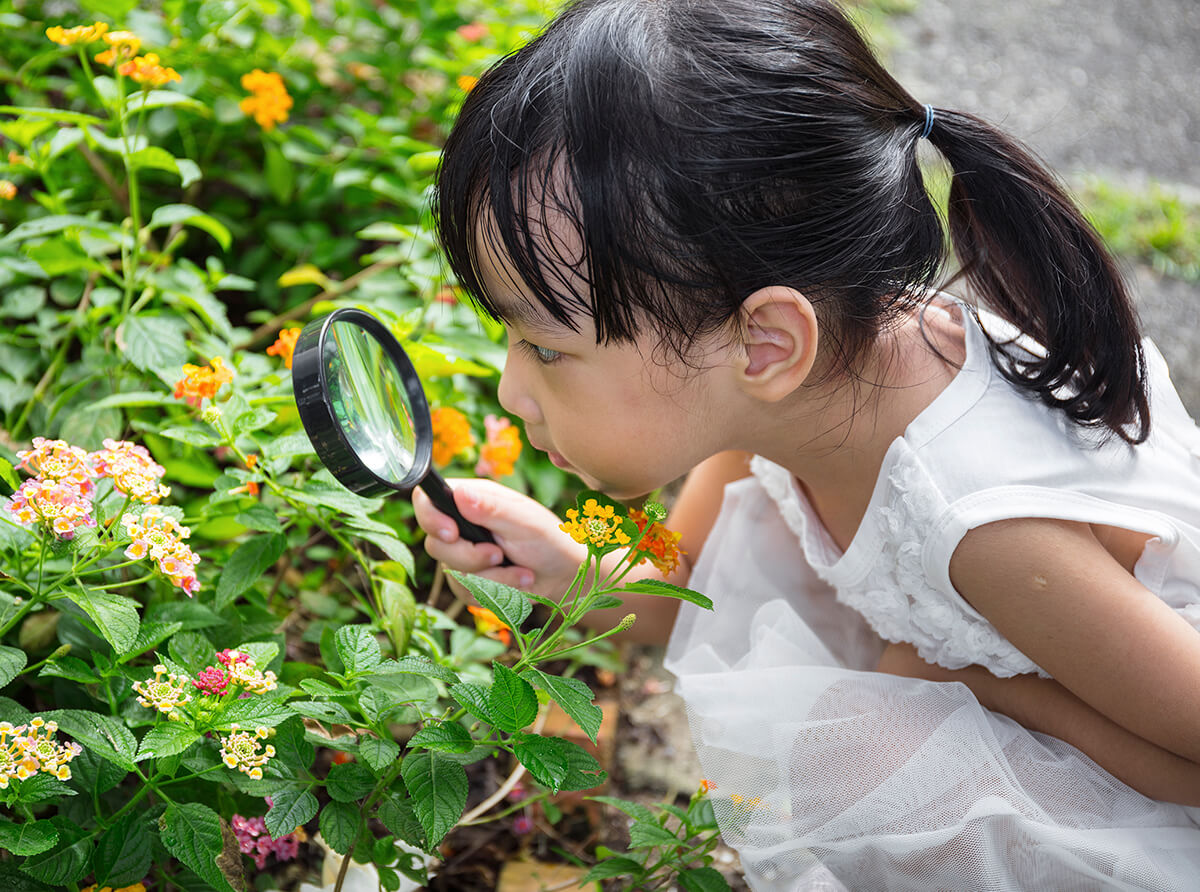
CHANGING SHADOWS: Use sidewalk chalk to trace your silhouette striking a fun pose. Come back to the same spot at different times throughout the day and observe how your shadow has changed. You can even try this with an animal toy, or just about any other object you can think of.
LOOSE PARTS ART: Gather leaves, nuts, shells, bark, sticks, and other natural supplies found on the ground that can be safely moved without disturbing wildlife. Use the loose parts to create a temporary art piece. Or, use the items to create “leaf litter critters.” Can you guess which animal your friends have made?
SINK OR FLOAT?: Look around for natural objects (again, only moving things when it will not disturb plants or animals). Predict whether the items will sink or float when tossed in water, whether it be a nearby stream or a bucket at home. Looking for an extra challenge? See if you can make a boat!
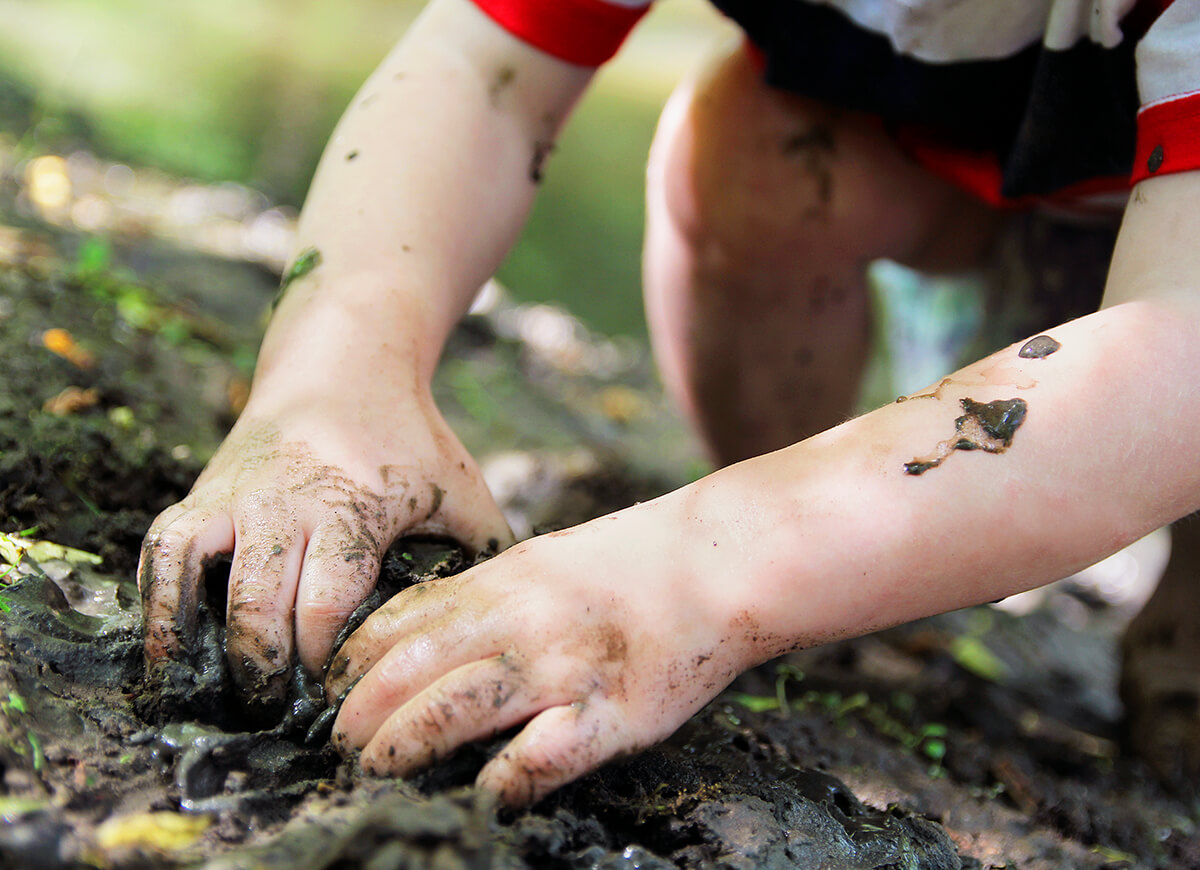
SENSORY STRUCTURES: For young children, experiencing the world through their senses is critical to their development. Fill a large container with materials like sand, water, dirt, or leaves. Allow kids to simply run their fingers through, or hide small toys for them to dig up.
For older children, experiment building with mixtures of sand, dirt, and water. Which ratios work best? Can you build a tower, a nest, a birthday cake, or something else using your own imagination? Don’t be afraid to get messy!
NATURE SCAVENGER HUNT: Our own neighborhoods and backyards are often brimming with local wildlife. How many plants, animals, and natural objects can you find? Use our scavenger hunt as a guide, or make your own! Break out a pair of binoculars or a magnifying glass for extra fun while exploring. Remember to observe respectfully from a distance, without trying to touch or feed wildlife.
SHADOW GAMES: Find an area with plenty of shade from trees or buildings to play a game of shadow tag. The shadow areas can be designated as safe places to move between, or vice versa. Or, work as a team to move from one shaded area to another, only letting your feet touch the shadows!
(Top photo: jacoblund/iStock / Getty Images Plus)

